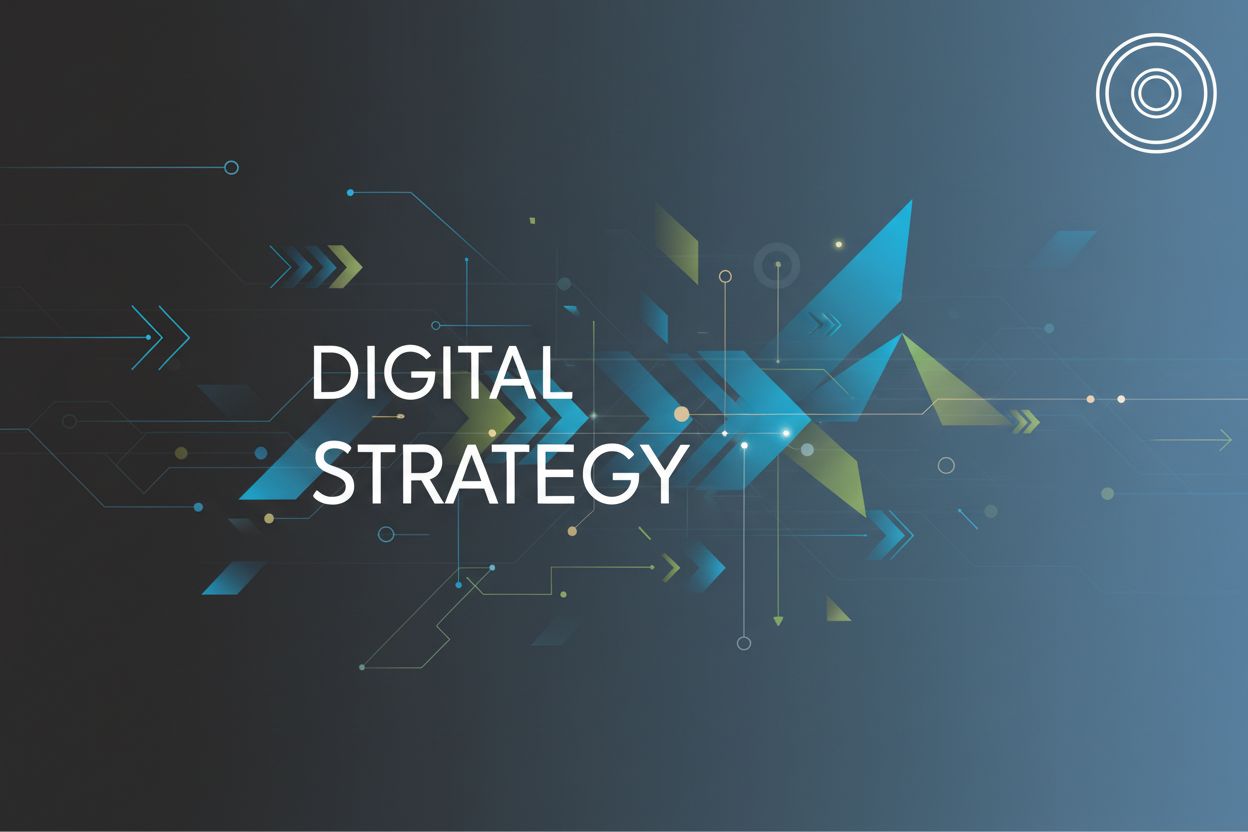What is Location-Based Marketing? The Complete Guide
TL;DR
Understanding Location-Based Marketing
Okay, let's dive into location-based marketing. I always think of that scene in "Minority Report" where ads change based on who's walking by—it's kinda creepy, but also where things are heading, right? (Minority Report (2002) really aged well : r/movies) This movie concept, while fictional, hints at the power of hyper-personalization based on real-time context, a core idea in location-based marketing. It's about anticipating needs and delivering relevant experiences before someone even asks. So, what is it?
Well, location-based marketing is all about hitting people with relevant ads and info based on where they are at that moment. Think of it as the digital version of knowing your customers so well, you can predict their needs. (Knowing Your Customers So Well You Can Predict Their Needs)
Here's the gist:
It uses location data. This can come from smartphones, wi-fi, gps signals, or even those little Bluetooth beacons stores use. (Beacons in Retail: 7 Use Cases, Real-life Examples, Pay-offs)
It's super personalized. Location data allows for offers and experiences based on proximity. A coffee shop can ping you a coupon when you are nearby? Absolutely.
It's not just retail. Healthcare providers can use it to remind patients about appointments when they are near a clinic, and banks can alert users about fraudulent activity if their card is used far from their current location.
So how does this location sorcery work in practice?
First, they got to collect that sweet location data. This happens through apps, api's, and other tech that taps into your device's location services.
Then, they segment audiences based on places they frequent or are currently visiting.
Finally, automation kicks in. In this context, automation means setting up systems that automatically trigger marketing actions based on predefined rules and user location. When someone enters or leaves a specific area, bam! They get a message. Someone walks into a geofenced area around a car dealership, and suddenly, they get ads for the latest model? That's location-based marketing in action.
The Importance of Location-Based Marketing
Understanding why location-based marketing is so crucial sets the stage for effective implementation. It's not just about the "how," but the significant impact it can have on businesses and customer experiences.
Enhanced Customer Experience: By delivering relevant information and offers at the right time and place, businesses can significantly improve customer satisfaction. Imagine getting a discount for your favorite coffee shop just as you're walking past it – it feels thoughtful and convenient.
Increased Engagement and Conversions: Proximity-based marketing naturally leads to higher engagement rates because the message is contextually relevant. This relevance translates directly into more conversions, whether that's a store visit, an app download, or a purchase.
Competitive Advantage: In today's crowded marketplace, businesses that leverage location data effectively can stand out. They can offer personalized experiences that competitors can't, fostering loyalty and driving repeat business.
Valuable Data Insights: The data collected through location-based marketing provides deep insights into customer behavior, preferences, and movement patterns. This information is invaluable for refining marketing strategies, optimizing store layouts, and developing new products or services.
Cost-Effectiveness: When done right, location-based marketing can be more cost-effective than traditional advertising. By targeting specific individuals in specific locations, marketing spend is optimized, reducing waste and increasing return on investment.
Key Location-Based Marketing Strategies
Okay, let's get into those key location-based marketing strategies. It's not just about knowing where your customers are, but what you do with that knowledge, right?
Geo-fencing is like drawing a digital circle around a real-world location. When someone's device enters or leaves that area, magic happens—a notification pops up, an app feature unlocks, something cool.
- Think of a car dealership creating a geo-fence around a competitor's lot. If a would-be buyer is spotted browsing the competition, targeted ads with special offers for their own vehicles could be sent.
- Or consider healthcare. A hospital could geofence its campus, sending appointment reminders to patients as they arrive, or directing visitors to specific departments via location-aware app features.
Geo-targeting is broader than geo-fencing. It's about delivering ads and content to folks in a defined geographic area.
- A local credit union might geo-target ads to people living within a 5-mile radius of its branches, promoting special mortgage rates or checking account bonuses.
- Even public services uses it; a city council might geo-target emergency alerts to residents in specific neighborhoods facing a flood or traffic disruption.
If you're got a mobile app, think about making it location-aware. This means using the user's location to change what the app does or shows.
- A travel app, for example, could suggest nearby attractions, translate street signs, or offer location-specific deals.
- Or a real estate app can provide instant property details, local school ratings, and nearby amenities for users who are physically near a listing.
This is about targeting mobile users with ads based on where they are. It's about delivering timely, relevant advertisements to individuals based on their current physical location.
- Picture a fast-food chain running ads for nearby restaurants during lunchtime, targeting office workers in a specific business district.
- Or a movie theater advertising showtimes and special snack deals when someone is near a competitor.
This is the somewhat forgotten strategy, but still a great one. Encourage people to "check-in" to your business on social media. Why?
- Because this data is marketing gold. You can use that check-in data to target ads to people who love your place. This often involves creating custom audiences on platforms like Facebook or Instagram based on users who have previously checked into your business or similar locations.
- Plus, you can offer social media discounts for people who check in and share their experience.
Okay, so that's how location-based marketing is used, but how effective is it? Let's dive into some results...
Technology Enablers of Location-Based Marketing
Location-based marketing isn't just some futuristic buzzword anymore, it's here, and it's kinda wild, right? But how does it actually work? Let's break down the tech that makes it all possible.
First up, we got gps – Global Positioning System. Yeah, you know it from your phone's maps, but it's way more than just directions. It pinpoints exactly where you are on the planet.
Think about apps that track your run – that's gps. It's also crucial for services like "find my phone" – pretty handy when you lose it down the back of the couch, or, you know, somewhere more public.
And it's not just about where you are. gps can track your movement over time. This is how companies figure out where people are going, what routes they take, and what stores they visit.
Then there's wi-fi. It's not as precise as gps, but it's still useful, especially indoors – where gps kinda struggles.
Wi-fi can figure out where you are inside a building – think shopping malls or airports. It also allows marketers to combine wi-fi data with geo-fencing.
Geofencing is when you create a virtual boundary around a real-world location. When someone's device enters that area, boom! A notification pops up. For indoor location tracking, wi-fi is a cost effective solution, making it a popular choice for businesses looking to engage customers within their physical spaces.
We will continue to explore more technology that enable location based marketing in the next section.
More Technology Enablers of Location-Based Marketing
Building on our previous discussion, let's explore additional technologies that power location-based marketing.
Bluetooth Beacons are small, low-energy devices that transmit a unique identifier to nearby smartphones. These beacons are particularly effective for micro-location targeting within a store or venue.
- Imagine a museum using beacons to send visitors information about an exhibit when they stand in front of it, or a clothing store sending a special offer for a displayed item.
- They enable hyper-local engagement, allowing for very precise interactions based on a customer's exact position within a space.
Cellular Triangulation is another method used to determine a device's location by analyzing the signal strength from multiple cell towers. While less precise than GPS, it's a widely available technology.
- This is often used as a fallback when GPS signals are weak or unavailable, providing a general location estimate.
- It can be used for broader geo-targeting efforts, especially for reaching users who may not have location services enabled for other apps.
Near Field Communication (NFC) allows for very short-range wireless communication between two devices.
- Think of tapping your phone to a payment terminal or a smart poster to get more information or trigger an action.
- While not typically used for broad marketing campaigns, it's excellent for specific, intentional interactions, like instantly downloading a menu or accessing exclusive content at a point of interest.
These technologies, when used in combination, create a robust ecosystem for location-based marketing, allowing businesses to connect with consumers in increasingly sophisticated and personalized ways.
Implementing Effective Location-Based Marketing Campaigns
Implementing effective location-based marketing campaigns is more than just knowing where people are; it's about crafting the right message and delivering it at the perfect moment. It's like being a mind reader, but with data, not magic, you know?
Set clear goals: Are you trying to boost foot traffic? Increase app downloads? Drive sales? Define exactly what you want to achieve. If you don't, you're just throwing money into the wind.
Establish kpis: Once you know your goal, set measurable targets. For example, a KPI could be a 20% increase in foot traffic within a geofenced area, or a 10% conversion rate from mobile ads.
Align with business objectives: Make sure your location-based marketing efforts supports the overall business strategy. There's no point in driving traffic if your staff isn't prepared to handle the influx.
Know your audience: Think about their demographics, interests, and behaviors. Who are you trying to reach?
Define geographic areas: Determine the relevant areas and proximity zones. Is it a 5-mile radius around your store or a specific neighborhood?
Consider contextual factors: Time of day, day of the week, local events, and weather can all impact the effectiveness of your campaigns, so don't overlook them.
Personalization is key: Generic messages won't cut it. Create personalized content that resonates with local audiences.
Offer exclusive deals: Entice customers with location-based promotions. Maybe a "10% off your next purchase" coupon when they are nearby.
Make it actionable: Ensure your content is timely, valuable, and easy to act on. A clear call to action is essential, people.
Select appropriate tools: There's a ton of location-based marketing platforms out there, so pick the one that fits your budget and goals.
Prioritize user experience: Make sure the user experience is seamless and non-intrusive. Nobody likes being bombarded with irrelevant ads.
Don't forget data privacy: Be transparent about how you collect and use location data, and always respect user privacy.
There are lot of moving parts; however, it's all about making sure you got the right message, right audience, and right time to get the most out of your location-based campaigns.
Measuring and Optimizing Location-Based Marketing Performance
Okay, let's talk about measuring this stuff, cause what's the point if you don't know if it's working? You can't just throw money at location-based marketing and hope for the best, you know?
It's all about those key performance indicators (kpis). Gotta track the right signals to see if your campaigns are actually resonating with folks.
- Are people actually going to your store after seeing that location based ad? Gotta watch that foot traffic.
- How many people who see the ad, actually buy something, or download the app? That's the conversion rate.
- Did sales go up in the areas you are targeting? That's the sales lift you want to see.
Don't forget to see how people are using your app after seeing your ads. Are they using location-specific features? What are they saying in reviews? If people are saying your ads are intrusive or creepy, you got to reel that in.
Optimizing Location-Based Marketing Results
Now that we've looked at measuring performance, let's dive into how to make your results even better. Optimization is an ongoing process, and it's where you really start to see the magic happen with location-based marketing.
A/B Testing: Don't just set it and forget it. Test different ad creatives, messaging, offers, and even the timing of your notifications. See what resonates best with your audience in specific locations. For example, test a "10% off" coupon versus a "free coffee with purchase" offer within a geofenced area.
Refine Geo-fences and Geo-targets: Are your virtual boundaries too broad or too narrow? Analyze the data to see if adjusting the size or shape of your zones leads to better engagement or conversions. Maybe a competitor's store is too close, or you're missing a key foot-traffic area.
Personalize Further: Based on the data you're collecting, can you make your messages even more tailored? If you know someone frequently visits your store on Saturdays, perhaps you can send them a special Saturday-only offer.
Optimize Timing: When are your customers most receptive to your messages? Is it during their commute, lunch break, or evening? Experiment with sending notifications at different times of the day to find the sweet spot.
Leverage User Feedback: Pay close attention to what users are saying. If you're getting complaints about intrusive ads, it's a clear signal to adjust your strategy. Positive feedback can highlight what's working well and should be amplified.
Integrate with Other Marketing Channels: Location-based marketing shouldn't exist in a vacuum. Ensure your location-based efforts complement your email marketing, social media, and other campaigns for a cohesive customer journey.
By continuously analyzing your performance data and making informed adjustments, you can significantly improve the effectiveness and ROI of your location-based marketing initiatives.
Navigating Privacy and Ethical Considerations
Okay, let's wrap this up, shall we? It's kinda like trying to leave a party without offending anyone—tricky, but doable. So, what's the takeaway from all this location-based marketing stuff?
Location-based marketing is a tool, not a weapon, you know? Here are some things to keep in mind:
Transparency is non-negotiable. Tell people what you're doing with their location data. No one likes feeling spied on. Be clear about what data you collect and how it's used.
Consent matters. Don't just assume it's okay to track someone. Make sure they actively agree to it. Opt-in mechanisms are crucial, and users should always have the ability to opt-out easily.
Security is a must have. Protect that data like it's your own, because it is, in a sense. Robust security measures are essential to prevent breaches and misuse of sensitive location information.
Location-based marketing can be pretty powerful, but it is your responsibility to wield it ethically.




